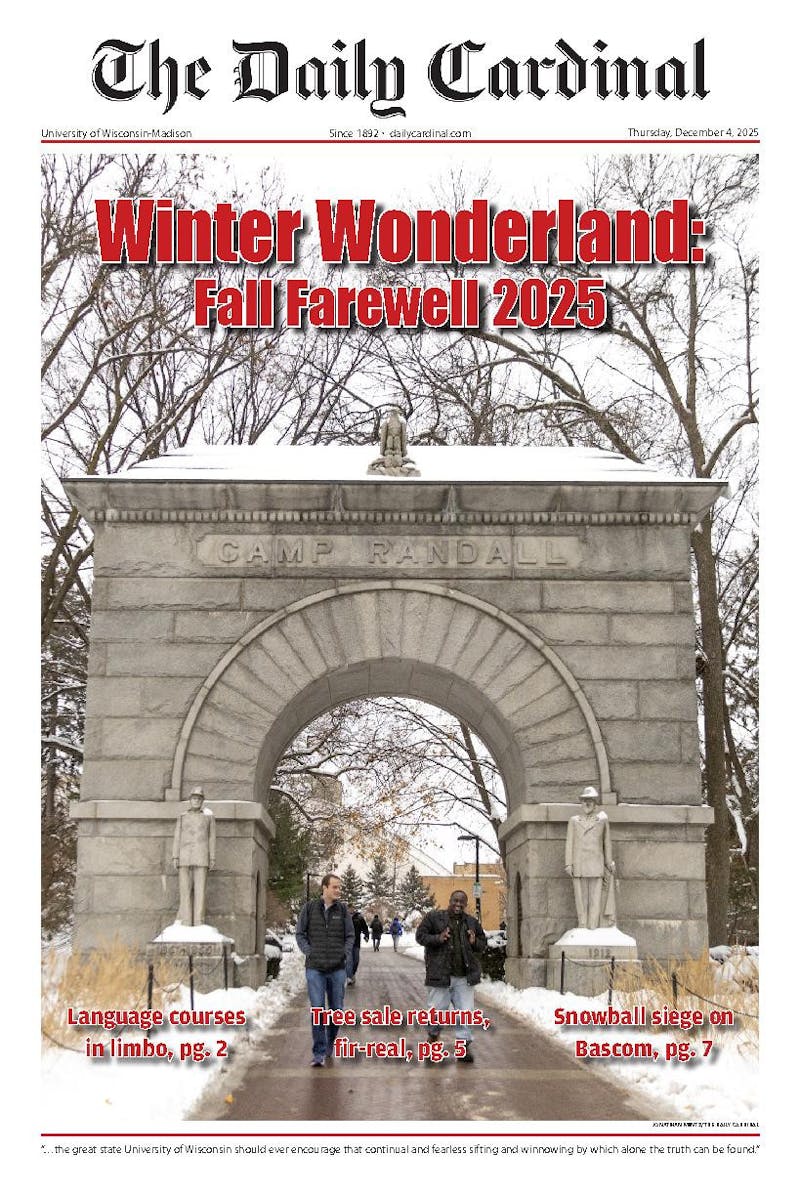It has been almost 16 years since Wisconsin has had a Democratic governor, but political prognosticators say this year will be different.
For more than a year, national and state Democratic party leaders and strategists, Wisconsinites, political enthusiasts and the press have followed the race closely, providing candidates with unprecedented media access and a soapbox for their issues.
As state Attorney General Jim Doyle, U.S. Rep. Tom Barrett, D-Milwaukee, Dane County Executive Kathleen Falk and state Sen. Gary George, D-South Milwaukee, campaigned each brought his or her vision to the party as Democrats sought a new image for a new governor. And while the race had its frontrunners, no candidate's lead was commanding enough to discount the rhetoric of the others, providing even lesser-knowns Falk and George with a significant role in a symbiotic environment.
With the July 31 7-1 vote by the state Elections Board to remove George from the primary ballot over allegations of fraudulent signatures on his nomination petition, state voters were deprived of a critical voice in the campaign. While few had expected George to win the nomination, he campaigned on an assortment of issues, from campaign finance and budget reform to urban sprawl, as well as emphasizing his opposition to the rigidity of truth-in-sentencing laws. George also campaigned on minority issues, providing a voice to their neglected concerns in a state with a small minority population and a race with only one nonwhite candidate.
Interestingly, at the same time George's removal from the ballot made headlines, another case of fraudulent signatures was making waves in Washington, D.C., where the popular incumbent Mayor Anthony Williams was removed from the Democratic primary ballot for the position in which he was receiving high approval ratings. While Williams' campaign had collected more than 8,000 signatures'more than the required 2,000 to make the ballot'allegedly so many signatures were clearly falsified that the city's election board voted to remove Williams' name from the ballot.
While critics of the George campaign have derided the senator for failing to verify all of his nominating signatures, several problems present themselves in the requirement to petition for a place on the ballot.
First, candidates often identify the collection of signatures as one of the most draining aspects of a campaign'draining of both fiscal and human capital. Campaign workers who might ordinarily be asked to put up posters or raise funds are frequently paid for dozens of hours circulating petitions at Concerts on the Square or Summerfest simply to get on the ballot.
But this is only symptomatic of the larger problem, a tendency toward political isolationism and an inherent inclination to turn our backs when campaigners solicit our attention. Where members of the '60s and '70s generations are associated with political activism of all stripes and protests for peace, today an average person at the farmer's market is more likely to turn his or her back on an approaching petition gatherer than not. This is characteristic of the trend Robert Putnam identified in his book \Bowling Alone,"" and mirrors a decline of participation in civic organizations.
We inhabit a time in which it is impractical to require signatures to get on the ballot. In an age in which more and more consumers complete their day-to-day tasks online in the privacy of their own homes, the task to collect signatures is perceived as more invasive of a voter's privacy.
According to the Wisconsin Democracy Campaign, in 2000, one taxpayer in 11 supports candidates' right to run for office by checking the box to donate $1 to public campaign funds, funds which do not even go to specific campaigns.
People have been and continue to grow increasingly reluctant to spare a moment of their time for political causes.
But if that same 9 percent of the population would take the time it takes to check a box by signing their names to a petition, George would still be in the race for governor.





